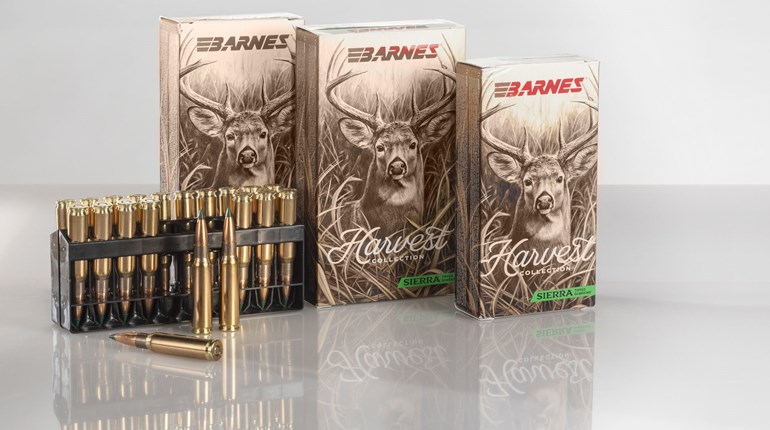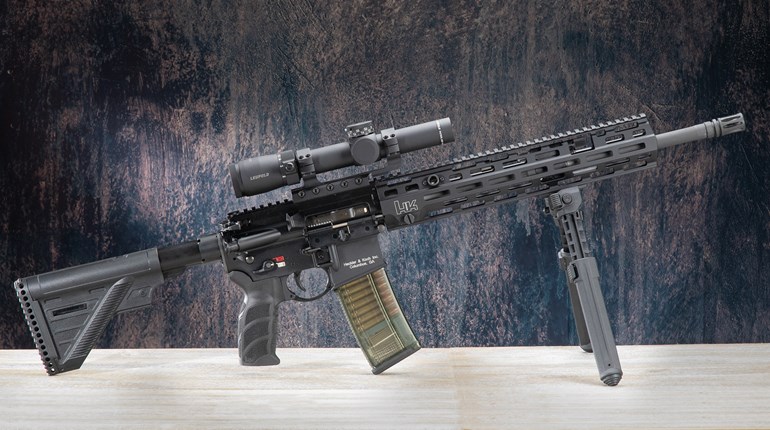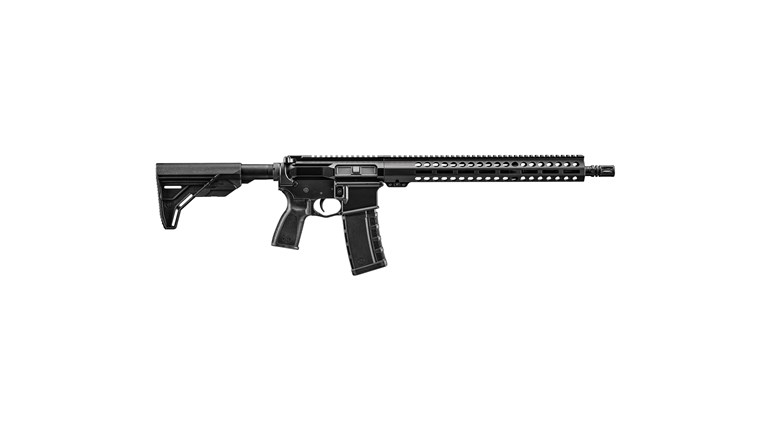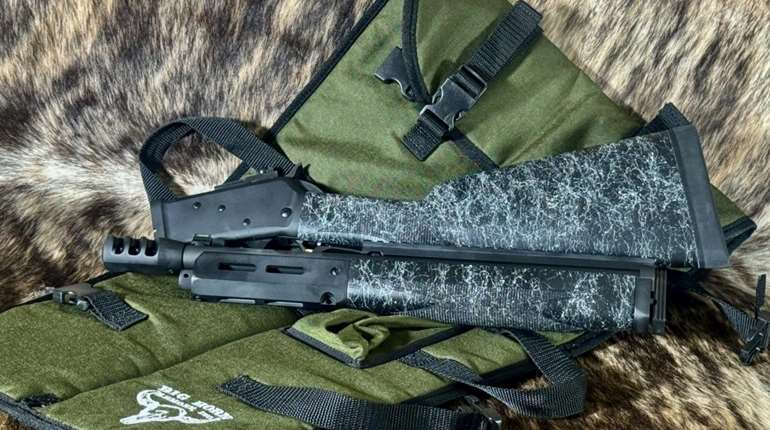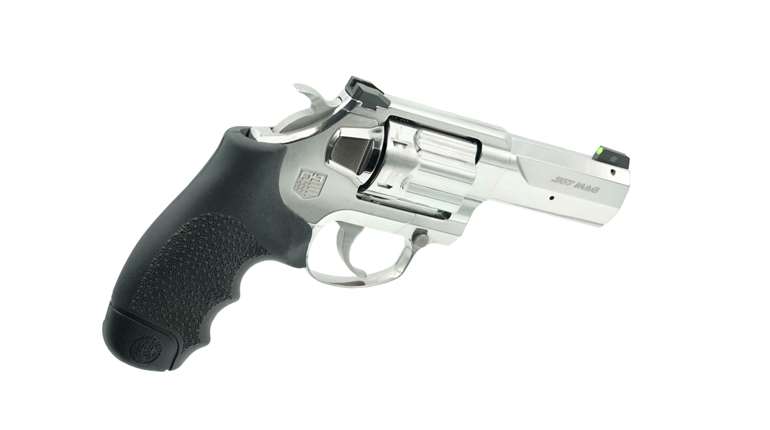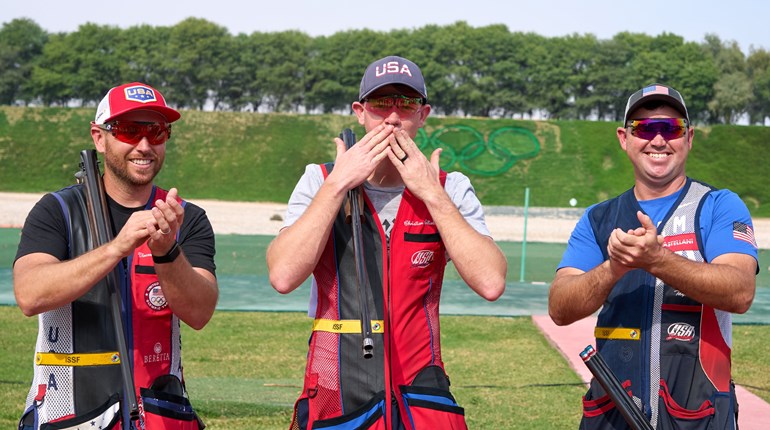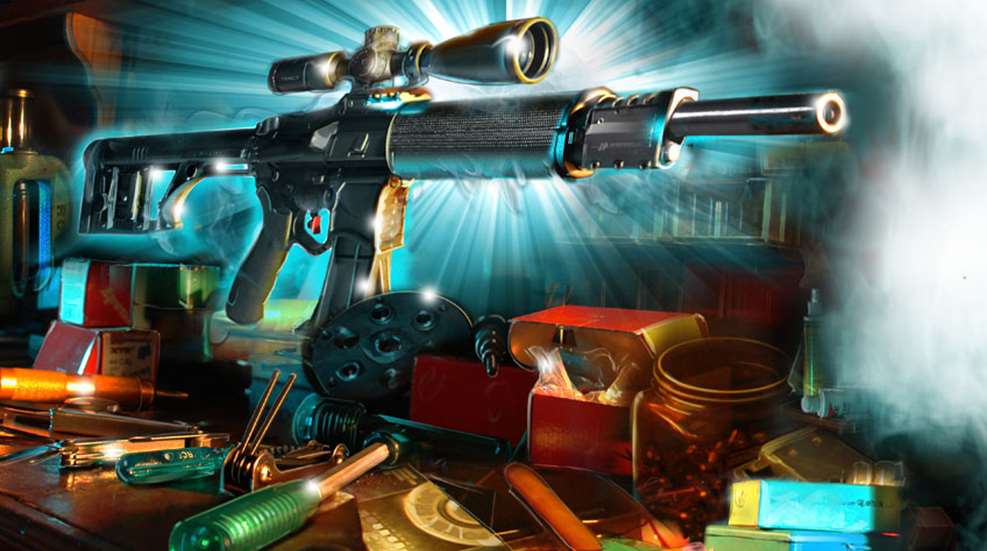
This article, "The Hoarder's Tale" appeared originally as a feature story in the June 2017 issue of Shooting Illustrated. To subscribe to the magazine, visit the NRA membership page here and select Shooting Illustrated as your member magazine.
I am never going to be a top-level national 3-gun competitor. I was too old when I started, I don’t have time to practice and as a result, I sort of suck. So when I get to the prize table at a big match, it’s a pretty sure bet that all the good stuff is gone. At some forgotten match a while back, I picked up my usual hat and sample bottle of oil and tossed it all on my kitchen table when I got home. Months later, we were expecting company for dinner and I was asked to clean the table. I found an envelope folded up inside the hat that I had not noticed before. I expected an advertisement, (just what we all want to win, right?) but it was a gift certificate from Seekins Precision for a new AR-15 lower. Everyone understands what that means: I simply had to build an AR-15.
The trouble was my gun fund was running a deficit, and there was no money for AR-15 builds. I got to thinking that after a half-century of messing with guns, I have collected a large assortment of parts, so I started scavenging my shop.
I am from the Einstein school of thought about cluttered desks and cluttered minds. I have read about neat and orderly gunsmithing shops, but to be honest, I don’t believe they exist in the wild. So this “finding parts” thing for this AR-15 build was not a fast process.
“Hoarder” is such a mean-spirited word. I much prefer “collector,” and find myself pointing out the differences to my wife quite often. I am a gun guy and so the stuff I collect runs mostly to the shooting sports. To disparage any more triggering events where the hateful “H” word is used, I offer the following report to support my defense.
There were several partial lower parts kits dumped into a multitude of plastic trays, along with a bunch of other parts and pieces. I often listen to recorded books while I work, and I think I was into the third novel by the time I located everything I needed for this particular AR-15 build, but it was all there.

I was pretty sure I remembered a used Timney trigger hanging on a pegboard in the back of the shop, but of course it wasn’t there. After looking for a few hours, I started cursing the aging process and what it does to your memory, thinking that maybe I had used the trigger in another gun. I kicked some empty solvent cans out of my way after tripping over them for the fourth or fifth time, and there it was, dusty, dirty and lying in the corner where it had fallen a long time ago. A spritz of Brakleen, and it was good as new.
I picked through my box of grips, sorting through dozens of plastic “mil-spec” junk I never could toss in the trash, until I found a dusty Ergo grip. I remembered trading with a large-pawed buddy who wanted a bigger grip I had hanging around, probably during the Clinton administration.
I found a rifle-length buffer tube that had been tie-wrapped to a pegboard and used to store those pipe cleaner things for cleaning gas tubes. I have a wall of plastic bins and deep in the collected junk there, I found a spring and a buffer.
My friend Randy Luth sold DPMS years ago and later started Luth-AR, making buttstocks. Luth is extremely generous to the shooting sports, and almost every match has a bunch of his stocks on the prize table. I had one that somebody else won and then traded for something he wanted from my prize bag. Those of us who scavenge the leftovers on the prize table often have these little swap meets in the parking lot after a match. With that, I had all I needed to build a functioning AR-15 lower.
Deep in the dusty dregs of my memory, I recalled seeing an upper receiver buried in the bottom drawer of a little-used toolbox. I was off by a drawer or two, but I found it. I don’t have a clue where it came from, and it had probably been there for a long time. If it belongs to any relatives, tough—consider it a storage fee. There was even a plastic bag full of parts with it, which was thoughtful of somebody to include.
Back when I first got into 3-gun, I was trying to build an AR-15 and one of the mail-order places sent the wrong barrel. The customer-service guy offered me a great price if I wanted to keep it, so of course I put it on a shelf and promptly forgot it for a decade. It took a while, but I found the barrel, still in the cardboard tube, on top of a storage cabinet, buried under a mound of junk. Even a committed collector has to admit that some stuff has no value. Of course, I put it all back on top of the cabinet.
To my surprise, the barrel was a 20-inch Krieger with a 1:7-inch twist rate. It’s a semi-bull barrel that measures .725-inch at the muzzle. I think it was designed for high-power competition, so I had high hopes about its accuracy. I suppose as AR-15 barrels go, this is as good as it gets—one of those forgotten treasures that justify the clutter, dear.
I had a carbon-fiber fore end that I had taken off a buddy’s gun after it broke. The only problem was that the tube had separated from the barrel nut, I tried to explain about epoxy, but he tossed it in the trash anyway. I, of course, fished it out and put the pieces on a shelf. I figured this AR-15 build would be a good time to glue it back together.
When my friend Chris Cerino started working for Rubber City Armory, he was at a match giving out bolt-carrier groups to some of the shooters for promotion. I remembered that he gave me one, but I could not find it in my shop, my reloading area, gun vault, basement, garage, shed, truck or either of the two off-site storage units.
My wife says she can find anything, and I call her in for special cases, but she was struggling here. After hours of looking, I knew where it was headed. It was going to be “my fault,” so before she started on that “H” word thing again I headed to the shooting range for a little trigger time.
She found the bolt-carrier group about the time I was picking up my brass for the day. It was in the bedroom under a pile of logo T-shirts from the various matches I have attended. I have no idea why she didn’t think to look there first, but I am very clear now that asking this question was a bad decision.
There is always a charging handle hanging around, and while I was digging in my wall of storage bins looking for one, I found a JP Enterprises adjustable gas block. It was new and still in the packaging, and I have no clue why it was in with all the used AR-15 parts. I have a system, and sometimes other people in my shop disrupt it when they try to “tidy up.” Their intentions may be good, but their actions upset the balance and mess with the carefully developed feng shui I try to maintain.
The system is: used parts get tossed randomly into one of the multitude of bins or cardboard boxes scattered around the shop and new parts are put in very specific places, so I can never find them when I am ready to use them for an AR-15 build. The idea that this gas block was in the wrong place was madness. What’s the point of even trying?
Finally, I realized that the only thing I still needed to build this AR-15 was a gas tube. I scoured the shop looking for a rifle-length tube. I found a bunch of carbine-length tubes and even a few mid-length versions—some were not even kinked or bent. But, no rifle-length tube chose to come forward. I visited every local gun shop, and nobody stocked such a critter. Most tried to discourage me from building an AR-15 by explaining how low their prices were on new AR-15s. (This was one of the lulls between the panic-buy surges and everybody was overstocked; so there’s a chance that maybe I might have bought another gun or two. It’s an investment, right?)
I checked with all the usual suspects for online gun parts, but the shipping was almost as much as the part. “Damn,” I thought. “If only they had free shipping like Amazon Prime.” On a whim, I went to Amazon and typed in “AR-15 gas tubes.” It was on my front porch the next day. Odd times we live in.

It looked like I had everything I needed for my AR-15 build, so I bulldozed a clear space on my bench, got out some tools and went to work. After an hour or two, a a precision AR-15 emerged. I scrounged around in my box of used scopes and found one that was appropriate. In another box of used parts I found a scope mount. It looked like road kill, all beat up and scratched, but all the parts were there, and it appeared functional. I cleaned up the worst dents and scratches with a file, hit the thing with a sandblaster, then gave it a coating of Brownell’s Aluma-Hyde II and it looked brand new.
After building the AR-15, I took the thing to the range not expecting a whole lot, considering I cobbled it together from parts I had laying around. When I looked at the first five-shot group through the spotting scope I thought, “Hell, that thing can’t even get them all on the target.”
I adjusted the rifle scope for zero and fired another five-shot group. This time they were all there, clustered in a tight little group. I walked down to look at the first target and found the “bullet hole” was a bit larger than I thought and contained all five shots.
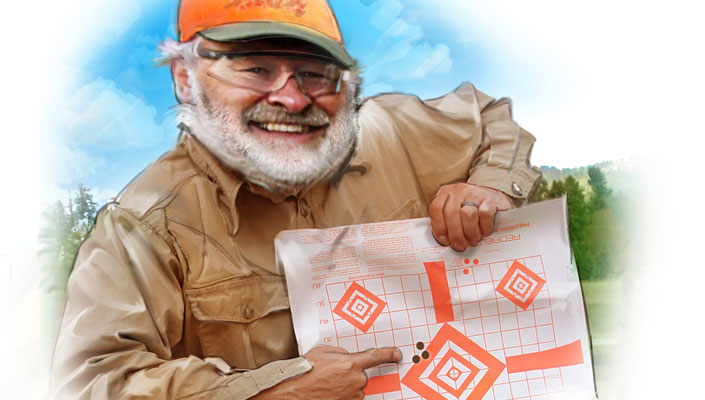
That was with Federal Premium 69-grain Match ammo with Sierra bullets. So I decided to shoot the Shooting Illustrated protocol for testing. The average for five, five-shot groups was .51 inch. I dug around in the range box for some more match ammo and found some Black Hills 69-grain Match. That load averaged .67 inch and Federal 77-grain match came in at .7 inch.
I started messing with other ammo products, not doing a formal test, but just shooting a few groups with each. The best was a .3-inch group, again with Federal 69-grain Match. My handloads with 55-grain Hornady V-Max consistently shot in the .4-inch range, and every load I tried shot inside of an inch.
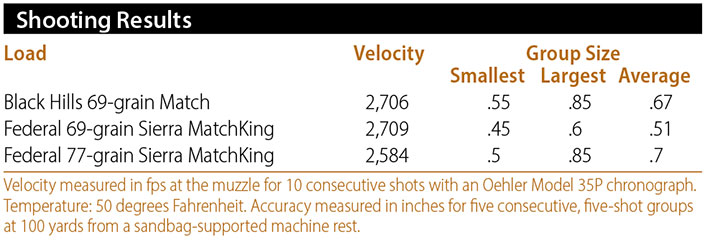
Because this AR-15 build is so accurate, I started using this gun to test optics for magazine articles. Part of that is to shoot “around the grid” to test the repeatability of the scope’s adjustments. I keep records like I keep house in my shop, so I didn’t record all the groups, but a lot of them were one ragged hole.
Like most collectors, I have a loose rule that if something hangs around for more than a year, I forfeit whatever I paid for it. I suppose I bought a few of these parts sometime in the past, but it didn’t seem that way. Using that convoluted logic, my total out-of-pocket cost was a gas tube that set me back about 15 bucks. The result was a rifle that is a strong contender for the most accurate AR-15 I have ever owned.

The lesson here is simple: The next time some hater starts spouting the “H” word, don’t let it trigger you and send you scurrying to your safe space. Be strong, be proud and explain with assertiveness that you are not hoarding—you are just gathering parts for the next AR-15 build.












